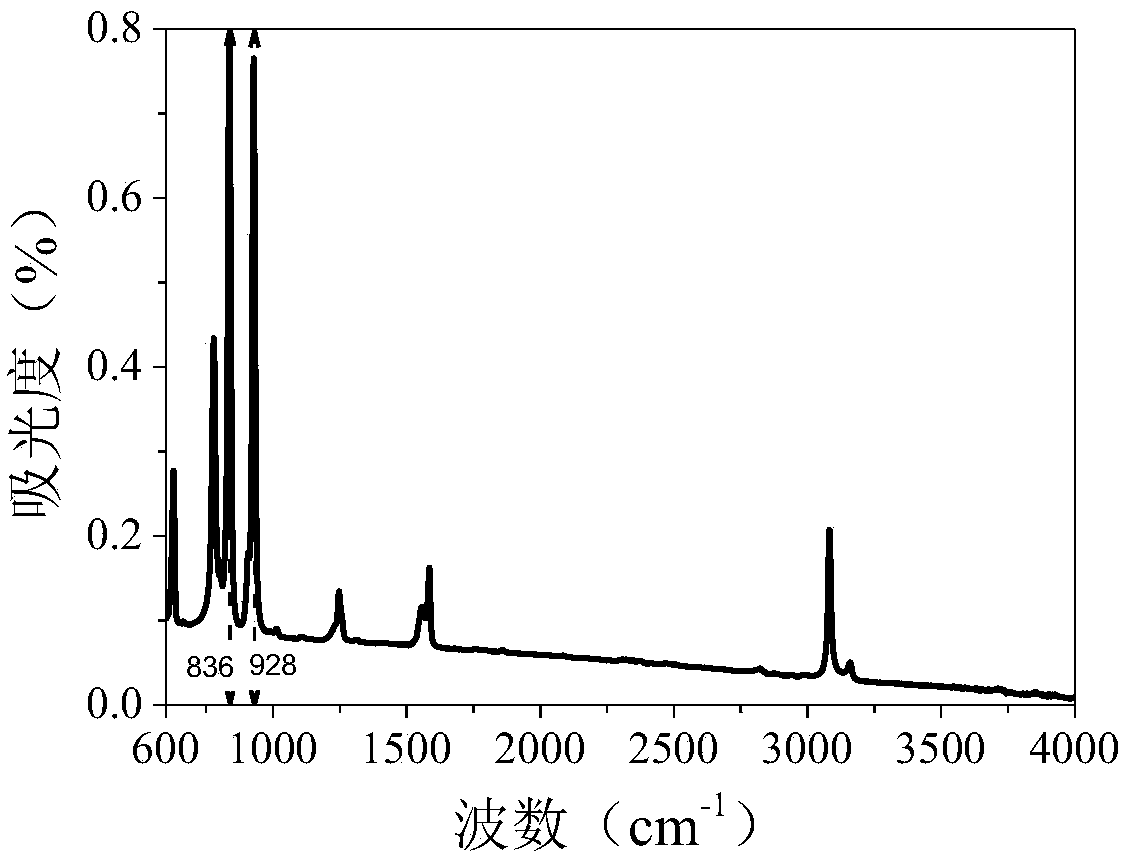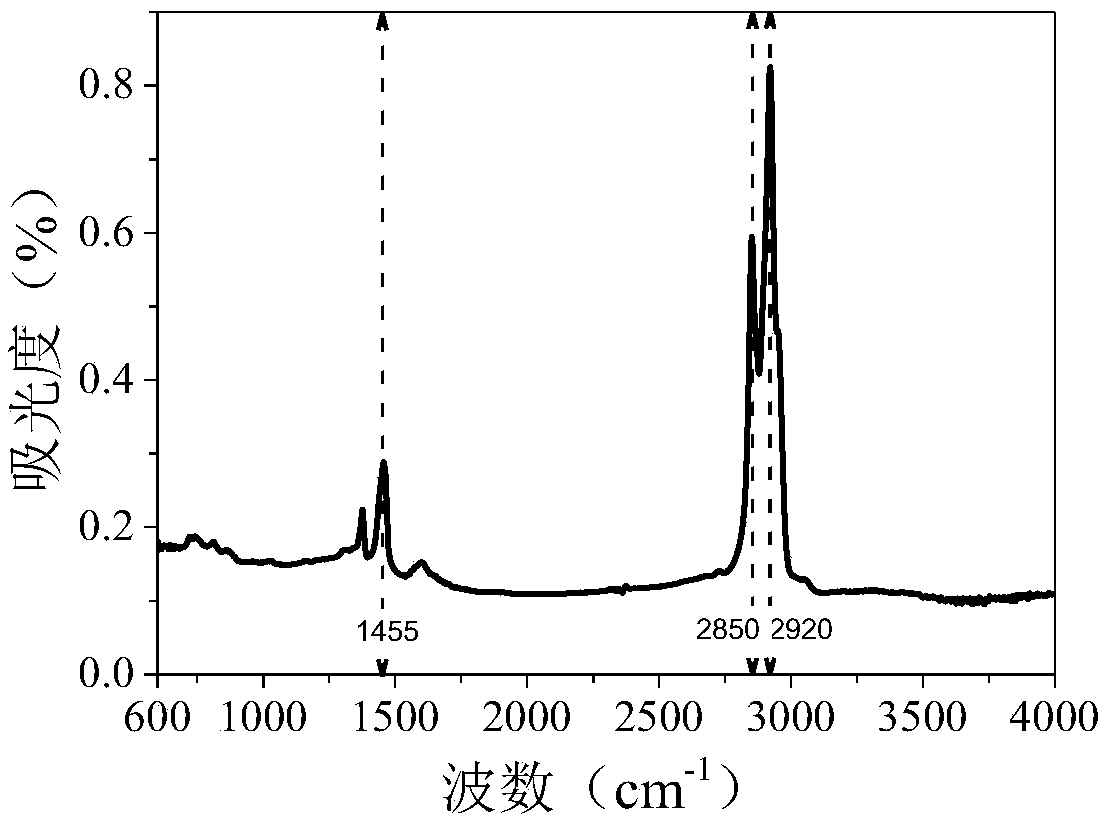Method for detecting residual trichloroethylene in recycled asphalt by adopting FTIR
A technology of trichlorethylene and recycled asphalt, which is applied in the direction of measuring devices, material analysis through optical means, instruments, etc., can solve the problems of inaccurate evaluation of the aging degree of old asphalt, affect the purity of recycled asphalt, and it is not easy to achieve detection results Intuitive, true and reliable, easy to grasp the effect of application and promotion, avoiding human error
- Summary
- Abstract
- Description
- Claims
- Application Information
AI Technical Summary
Problems solved by technology
Method used
Image
Examples
Embodiment 1
[0048] A kind of method adopting FTIR detection of the present invention to recover residual trichlorethylene in asphalt comprises the following steps:
[0049](1) Use FTIR equipment to detect pure trichlorethylene at a test wave number of 600-4000cm -1 Absorbance within the range, calibrate the wavenumber position where the absorbance of trichlorethylene presents an obvious peak, the results are shown in figure 1 .
[0050] In trichlorethylene, due to the out-of-plane bending vibration of the -C-H chemical bond and the stretching vibration of the -C-Cl chemical bond, the FTIR detection result is at a wavenumber of 836cm -1 、928cm -1 There is a distinct absorbance peak.
[0051] (2) Use FTIR equipment to detect the original asphalt at a test wave number of 600-4000cm -1 The absorbance within the range, the wavenumber position where the asphalt absorbance presents an obvious peak. The original asphalt adopts SBS modified asphalt, the performance index test results are show...
Embodiment 2
[0070] A kind of method adopting FTIR detection of the present invention to recover residual trichlorethylene in asphalt comprises the following steps:
[0071] (1) Use FTIR equipment to detect pure trichlorethylene at a test wave number of 600-4000cm -1 Absorbance within the range, calibrate the wavenumber position where the absorbance of trichlorethylene presents an obvious peak, the results are shown in Figure 6 .
[0072] In trichlorethylene, due to the out-of-plane bending vibration of the -C-H chemical bond and the stretching vibration of the -C-Cl chemical bond, the FTIR detection result is at a wavenumber of 836cm -1 、928cm -1 There is a distinct absorbance peak.
[0073] (2) Use FTIR equipment to detect the original asphalt at a test wave number of 600-4000cm -1 The absorbance within the range, the wavenumber position where the asphalt absorbance presents an obvious peak. The original asphalt adopts SBS modified asphalt, the performance index test results are sh...
Embodiment 3
[0091] A kind of method adopting FTIR detection of the present invention to recover residual trichlorethylene in asphalt comprises the following steps:
[0092] (1) Use FTIR equipment to detect pure trichlorethylene at a test wave number of 600-4000cm -1 Absorbance within the range, calibrate the wavenumber position where the absorbance of trichlorethylene presents an obvious peak, the results are shown in Figure 11 .
[0093] In trichlorethylene, due to the out-of-plane bending vibration of the -C-H chemical bond and the stretching vibration of the -C-Cl chemical bond, the FTIR detection result is at a wavenumber of 836cm -1 、928cm -1 There is a distinct absorbance peak.
[0094] (2) Use FTIR equipment to detect the original asphalt at a test wave number of 600-4000cm -1 The absorbance within the range, the wavenumber position where the asphalt absorbance presents an obvious peak. The original asphalt adopts SBS modified asphalt, the performance index test results are s...
PUM
 Login to View More
Login to View More Abstract
Description
Claims
Application Information
 Login to View More
Login to View More - Generate Ideas
- Intellectual Property
- Life Sciences
- Materials
- Tech Scout
- Unparalleled Data Quality
- Higher Quality Content
- 60% Fewer Hallucinations
Browse by: Latest US Patents, China's latest patents, Technical Efficacy Thesaurus, Application Domain, Technology Topic, Popular Technical Reports.
© 2025 PatSnap. All rights reserved.Legal|Privacy policy|Modern Slavery Act Transparency Statement|Sitemap|About US| Contact US: help@patsnap.com



